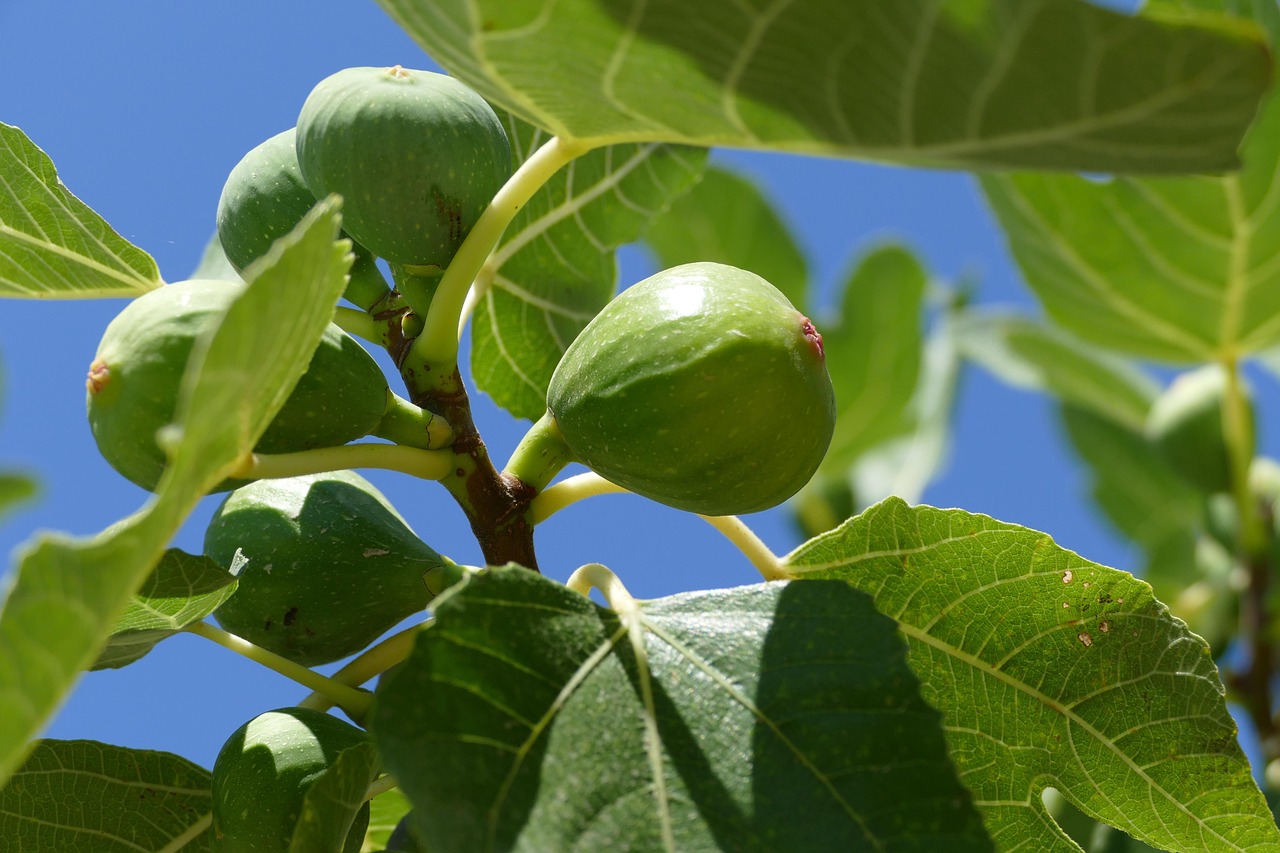The Brown Turkey fig tree grows moderately fast in warm climates, typically reaching heights of 10 to 30 feet. Under ideal conditions, it can produce fruit within the first two years of planting, making it a popular choice for both home gardeners and commercial growers.
The Brown Turkey fig tree, known for its sweet and flavorful fruit, is a popular choice among gardeners in warmer regions. This tree thrives in USDA hardiness zones 6 through 10, which includes a variety of climates across the southern United States. Understanding the growth rate of this tree in warm climates is essential for anyone looking to cultivate it successfully.

Figs are generally considered low-maintenance trees. They require minimal care once established and can adapt well to different soil types, although they prefer well-drained, fertile soil. In warm climates, the combination of ample sunlight and moderate rainfall creates an ideal environment for rapid growth and fruit production.
Growth Rate Factors
Several factors influence the growth rate of Brown Turkey fig trees in warm climates. Here are some key considerations:
- Soil Quality: The nutrient content and drainage of the soil can significantly impact growth. Well-drained soil with organic matter enhances growth rates.
- Watering: Adequate watering during dry periods is crucial. However, overwatering can lead to root rot.
- Sunlight: Full sun is ideal for fig trees. A minimum of 6 hours of direct sunlight per day promotes healthy growth.
- Temperature: Brown Turkey figs thrive in temperatures between 70°F and 85°F. Extreme heat or cold can stunt growth.
In general, Brown Turkey fig trees exhibit a growth rate of approximately 1 to 2 feet per year. This rate may vary depending on the specific conditions of the growing environment. Regular pruning can also enhance growth by encouraging new shoots and improving air circulation.

Growth Timeline
When planting a Brown Turkey fig tree, understanding its growth timeline can help set realistic expectations. Below is a typical timeline for growth and fruiting:
| Age | Height | Fruit Production |
|---|---|---|
| 1 Year | 2 to 3 feet | No fruit |
| 2 Years | 4 to 6 feet | Possible first crop |
| 3 Years | 6 to 10 feet | Increased fruit production |
| 5 Years | 10 to 15 feet | Established fruiting |
| 10 Years | Up to 30 feet | Abundant fruit production |
The timeline provides a general overview; individual trees may grow at different rates based on their environment and care. Notably, fig trees can bear fruit twice a year in warm climates, with the main crop typically ripening in late summer and a smaller crop appearing in early fall.
In addition to climate and care, the age of the tree at planting plays a significant role in its initial growth rate. Younger trees often establish quickly if planted in optimal conditions, while older trees may take longer to acclimate but can produce more fruit sooner.

Understanding these factors will help gardeners make informed decisions regarding the care and maintenance of their Brown Turkey fig trees, ensuring healthy growth and abundant fruit production for years to come.
Optimal Conditions for Growth
To achieve the best growth rates for Brown Turkey fig trees in warm climates, several optimal conditions should be met. These conditions not only enhance growth but also maximize fruit production. Below are the most crucial factors to consider:
- Soil Type: Brown Turkey figs thrive in sandy loam or clay loam soils which provide good drainage and aeration. Heavy clay soils can lead to root rot.
- pH Level: The ideal pH for fig trees ranges from 6.0 to 6.8. Regular soil testing can help maintain appropriate levels.
- Drainage: Ensure the planting area has excellent drainage. Raised beds or mounds can help prevent water accumulation around the roots.
- Mulching: Applying organic mulch around the base of the tree helps retain moisture, suppress weeds, and regulate soil temperature.
Watering Practices
Watering is a critical aspect of maintaining healthy Brown Turkey fig trees. Improper watering can lead to stunted growth or even tree death. Here are some best practices:
- Frequency: Water young trees regularly, especially during dry spells. Mature trees are more drought-resistant but still need water during prolonged dry periods.
- Amount: Deep watering is preferable. Water should penetrate at least 12 inches into the soil to encourage deep root growth.
- Signs of Stress: Watch for signs of underwatering, such as wilting leaves or leaf drop. Conversely, yellowing leaves can indicate overwatering.
During the growing season, aim for about 1 inch of water per week, either through rainfall or irrigation. Adjust this amount based on weather conditions and soil moisture levels.

Pest and Disease Management
Like any fruit tree, Brown Turkey fig trees can be susceptible to pests and diseases, which can hinder growth and productivity. Here are some common issues and management strategies:
| Pest/Disease | Description | Management Strategy |
|---|---|---|
| Fig Beetle | A pest that causes fruit damage. | Use traps and maintain tree health to deter infestations. |
| Leaf Spot | A fungal disease causing spots on leaves. | Improve air circulation and apply appropriate fungicides. |
| Root Knot Nematodes | Microscopic worms that damage roots. | Rotate crops and use resistant rootstock when available. |
Regular monitoring for signs of pests and diseases can help catch problems early. Implementing integrated pest management strategies can minimize the impact of these issues on tree health and productivity.
Pruning Techniques
Pruning is an essential practice for maintaining the health and productivity of Brown Turkey fig trees. Proper pruning encourages air circulation, reduces disease risk, and stimulates new growth. Here are some key points to consider:
- Timing: The best time to prune fig trees is during late winter or early spring before new growth begins.
- Tools: Use clean, sharp pruning shears to make clean cuts that heal quickly.
- Techniques: Focus on removing dead or damaged branches, as well as any crossing branches that may rub against each other.
- Shaping: Aim for an open center structure that allows sunlight to penetrate and air to circulate throughout the tree.
Pruning should be done with care to avoid over-pruning, which can weaken the tree and reduce fruit production in the following seasons.
Nutrient Requirements
The nutrient requirements of Brown Turkey fig trees are essential for maximizing growth rates and fruit quality. Fertilization should be done judiciously to support healthy development without causing excessive vegetative growth. Here are key nutrients to consider:
- Nitrogen: Essential for leaf growth; apply a balanced fertilizer in early spring.
- Phosphorus: Important for root development and fruit production; consider adding bone meal during planting.
- Potassium: Aids in overall tree health and fruit quality; use a fertilizer with potassium as part of your routine feeding schedule.
Regular soil testing can help determine specific nutrient needs and guide fertilization decisions throughout the growing season. Proper nutrient management will contribute to robust growth and abundant fruit harvests from your Brown Turkey fig tree.
Common Varieties of Fig Trees
Within the fig tree family, several varieties exist, each with unique growth patterns and fruit characteristics. The Brown Turkey fig tree is well-known for its adaptability and resilience in warm climates. However, understanding other fig varieties can help gardeners choose the best fit for their specific conditions. Below are some notable fig varieties:
- Black Mission: Known for its sweet, dark purple fruit, this variety thrives in warmer climates and has a similar growth habit to the Brown Turkey.
- Kadota: This variety produces greenish-yellow figs and is known for its excellent drying quality. It also grows well in warm environments.
- Celeste: Often referred to as the “Sugar Fig,” Celeste is a smaller tree that produces sweet, violet-blue figs. It is also quite hardy in cooler temperatures.
- Little Ruby: A dwarf variety, Little Ruby reaches about 3 feet in height and is suitable for container planting. It produces sweet figs and is ideal for small spaces.
Choosing the right variety can significantly impact growth rates and fruit yield. The Brown Turkey fig tree is often preferred for its reliable production and adaptability, especially in regions with hot summers and mild winters.
Growing Brown Turkey Figs in Containers
For those with limited space or poor soil conditions, growing Brown Turkey figs in containers can be an excellent alternative. Container gardening allows for mobility and control over soil quality. Here are some important considerations for successful container growth:
- Container Size: Choose a container that is at least 18 inches deep and wide to allow for adequate root growth. A larger container will reduce the need for frequent watering.
- Soil Mix: Use a high-quality potting mix that provides good drainage. A mix designed for fruit trees or vegetables is ideal.
- Watering: Container plants tend to dry out faster than ground-planted trees. Monitor soil moisture regularly and water when the top inch feels dry.
- Fertilization: Use a balanced fertilizer formulated for container plants. Fertilize every 4-6 weeks during the growing season to support healthy growth.
Container-grown Brown Turkey figs can provide an abundance of fruit, making them a rewarding choice for urban gardeners or those looking to add greenery to patios or balconies.
Seasonal Care for Brown Turkey Fig Trees
Proper seasonal care is essential for maximizing growth rates and ensuring a bountiful harvest. The care requirements may vary throughout the year, and understanding these changes can lead to better tree health.
Spring Care
As the weather warms up, fig trees emerge from dormancy. Spring care includes:
- Pruning: As previously mentioned, prune trees before new growth begins to remove any dead or damaged branches.
- Fertilization: Apply a balanced fertilizer to encourage vigorous growth as new leaves emerge.
- Pest Monitoring: Keep an eye out for emerging pests as temperatures rise. Early intervention can prevent infestations.
Summer Care
During the summer, fig trees will be actively growing and producing fruit. Care should focus on:
- Watering: Ensure consistent moisture, especially during dry spells. Mulching can help retain soil moisture.
- Pest Control: Regularly check leaves and fruit for signs of pests or diseases and take action as needed.
- Harvesting: Begin harvesting ripe figs, which typically occur from late summer into early fall. Harvesting encourages further fruit production.
Fall Care
As temperatures begin to cool, it’s time to prepare the tree for winter. Fall care includes:
- Final Harvest: Continue harvesting any remaining fruit before the first frost.
- Watering Adjustment: Gradually reduce watering as the tree enters dormancy.
- Mulching: Add mulch around the base of the tree to protect roots from cold temperatures.
winter Care
In warmer climates, Brown Turkey fig trees may not require extensive winter protection, but here are some considerations:
- Protection from Frost: If frost is expected, cover young trees with burlap or frost cloths to prevent damage.
- Minimal Watering: Water sparingly during winter months when the tree is dormant.
- Pest Control: Monitor for pests that may pose a threat even in winter months.
Caring for your Brown Turkey fig trees throughout the seasons will not only promote healthy growth but also ensure robust fruit production year after year.
Additional Tips for Successful Fig Cultivation
In addition to seasonal care and understanding growth rates, there are several other tips that can enhance the success of growing Brown Turkey fig trees in warm climates. These practices can help maximize yield and maintain tree health.
- Companion Planting: Consider planting companion plants that can benefit fig trees. For example, herbs such as basil and marigold can deter pests while enhancing soil health.
- Regular Monitoring: Regularly check the tree for signs of stress or disease. Early detection is key to addressing issues before they escalate.
- Support Structures: In areas with high winds, consider providing a support structure to help stabilize young trees until they establish a strong root system.
- Educate Yourself: Stay informed about best practices for fig cultivation, including local pest concerns and climate-specific advice. Resources like local agricultural extensions can be invaluable.
Common Myths about Fig Trees
Many misconceptions surround fig trees, particularly regarding their care and growth. Here are a few myths debunked:
- Myth 1: Fig trees cannot grow in pots. Truth: As mentioned earlier, Brown Turkey figs thrive in containers if provided adequate size and care.
- Myth 2: Figs only grow in tropical climates. Truth: While they prefer warmer climates, Brown Turkey figs can adapt to various conditions, including temperate regions, as long as they receive sufficient sunlight and protection during colder months.
- Myth 3: All figs are self-pollinating. Truth: Most common edible figs, including Brown Turkey, are self-pollinating, but some varieties require specific pollinators to produce fruit.
Environmental Considerations
When growing fig trees, it is crucial to consider environmental impacts. Sustainable gardening practices not only benefit the local ecosystem but also enhance the long-term health of your fig trees. Here are some strategies to embrace:
- Water Conservation: Implement drip irrigation or rainwater collection systems to minimize water waste.
- Pest Management: Use organic pest control methods whenever possible to protect beneficial insects and prevent chemical runoff.
- Diversity: Encourage biodiversity by planting a variety of plants around your fig trees, which can help deter pests and promote healthy soil.
Conclusion
The Brown Turkey fig tree is an excellent choice for gardeners in warm climates due to its moderate growth rate and ability to produce delicious fruit in just a few years. By understanding the essential factors that influence growth, including soil quality, watering practices, seasonal care, and pest management, gardeners can create an optimal environment for these trees to thrive.
Cultivating fig trees requires consistent attention and care, but the rewards are well worth the effort. With proper nutrition, pruning, and protection from pests, gardeners can enjoy abundant harvests year after year. Furthermore, understanding the myths around fig cultivation helps clarify the best practices for successful gardening.
As you embark on your journey with Brown Turkey fig trees, remember that patience and observation are key. Each tree is unique and may require specific adjustments based on its environment. By applying these principles and nurturing your fig trees with care, you can look forward to a fruitful future filled with sweet, juicy figs fresh from your garden.
